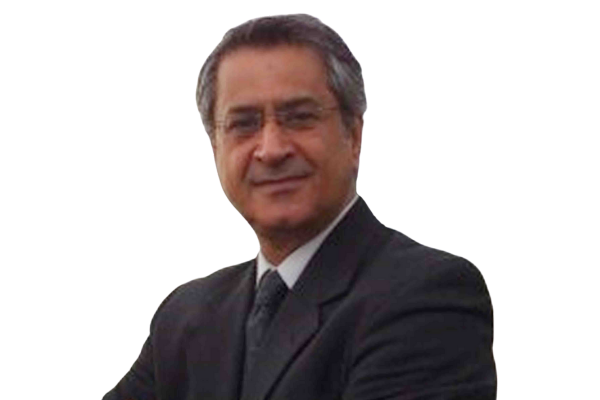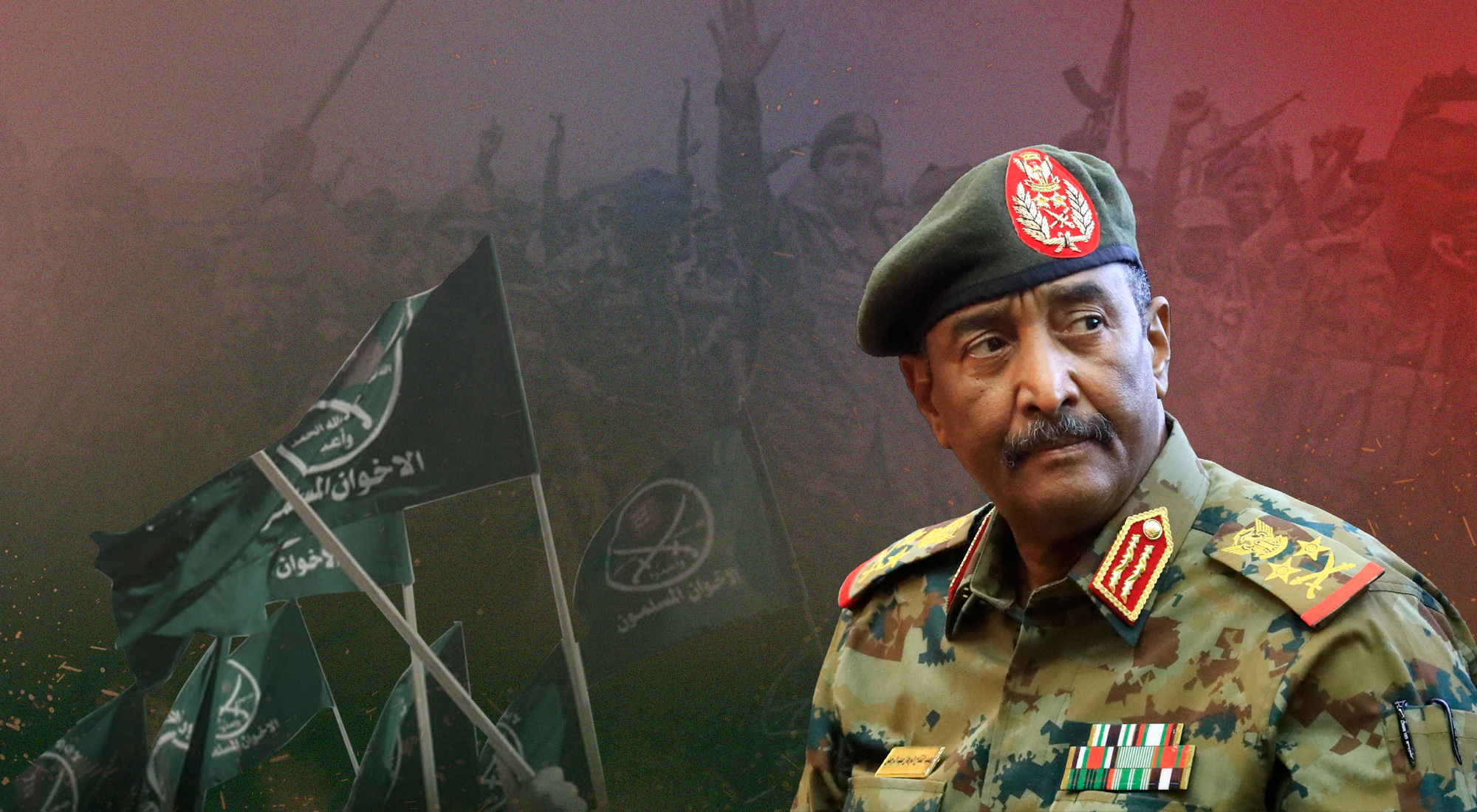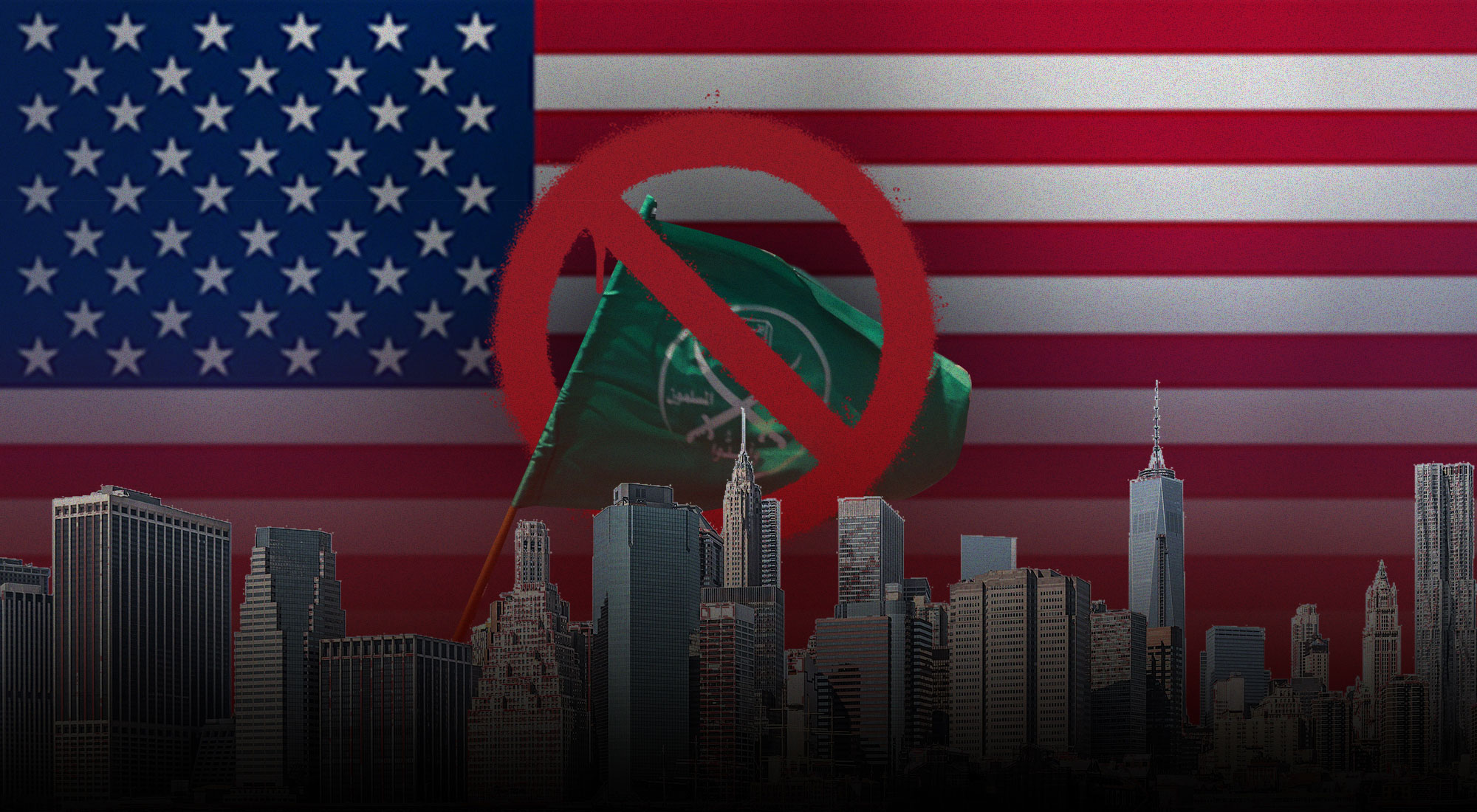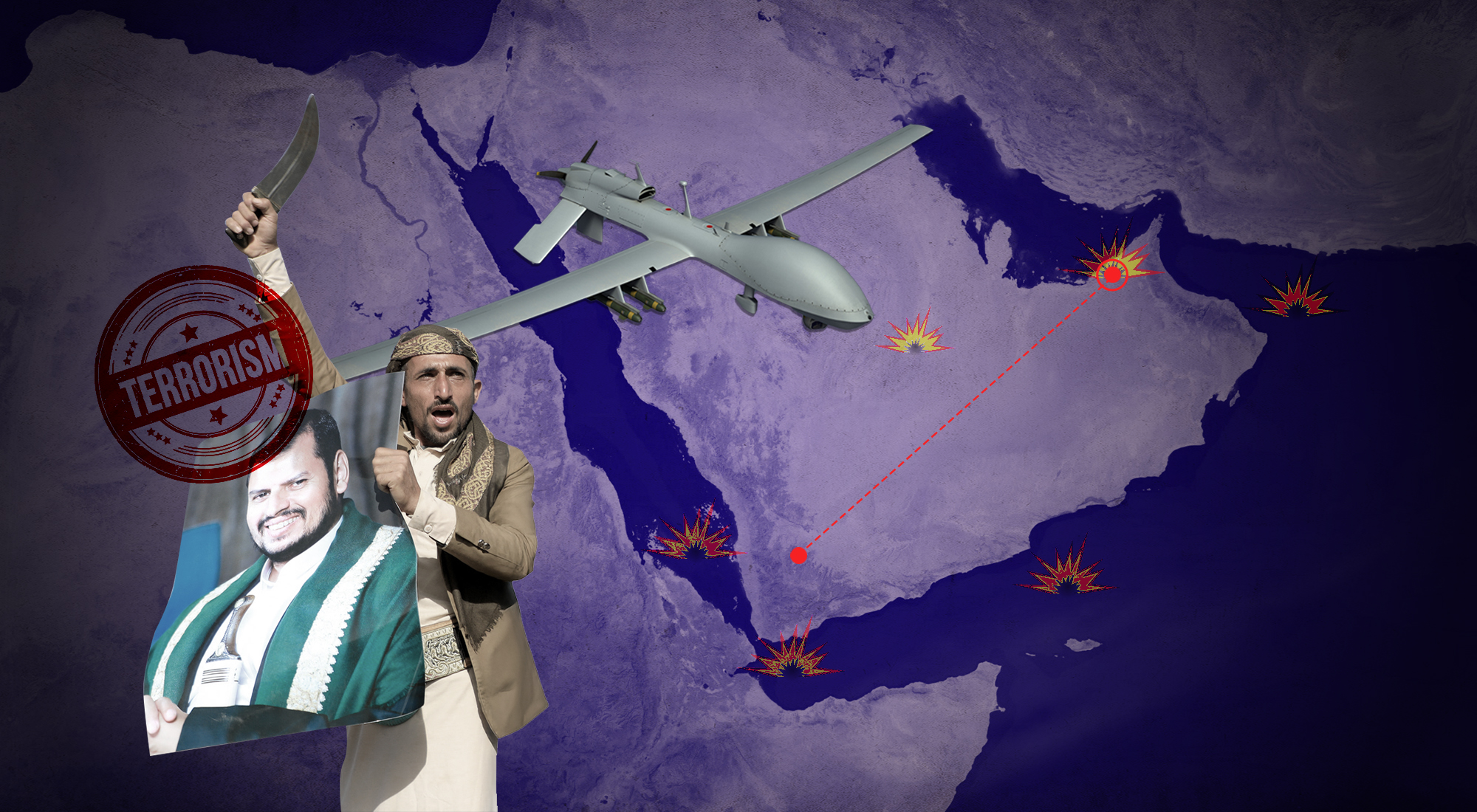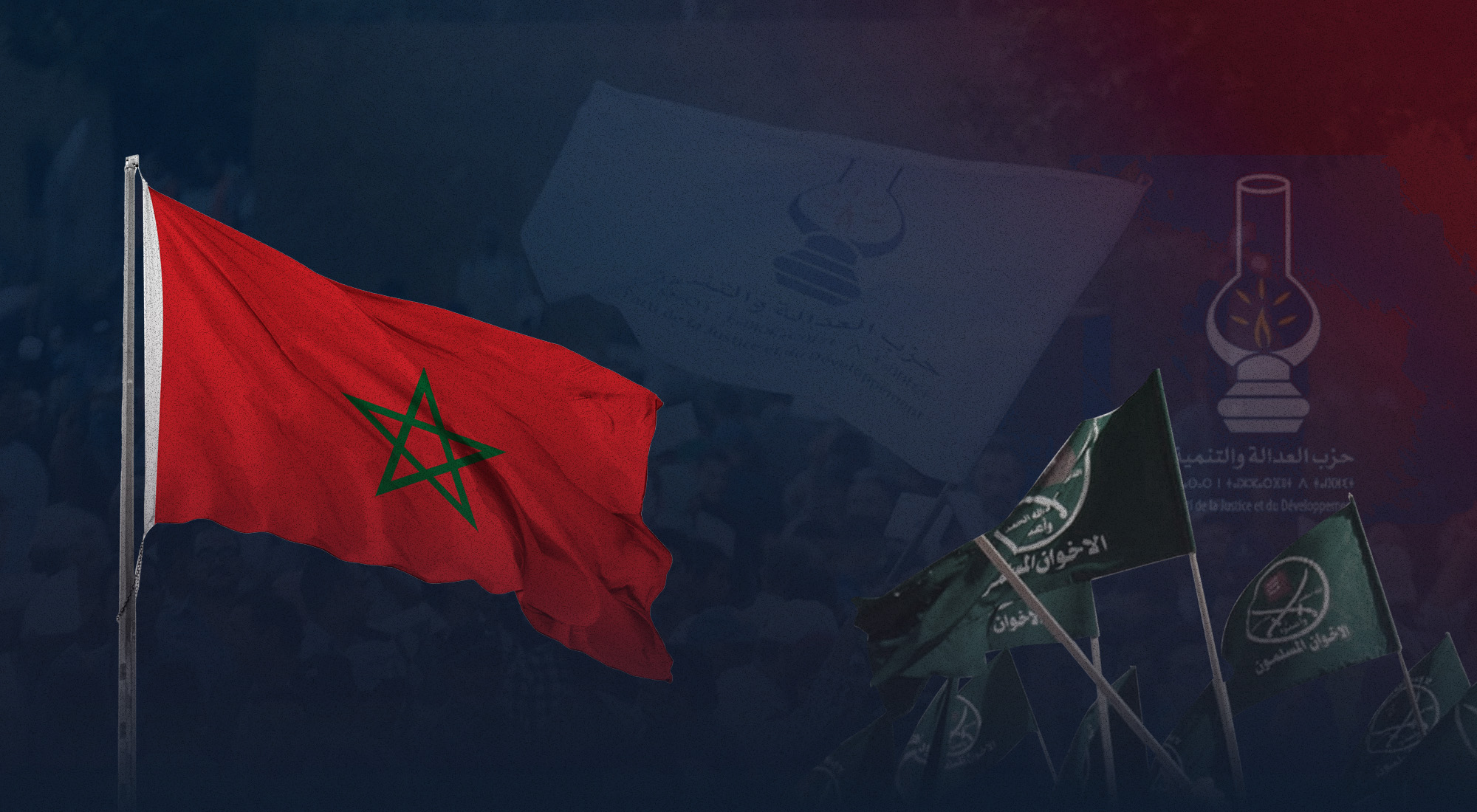Introduction
Islamist political groups have been active in Europe since the 1960s. The Muslim Brotherhood, which expanded according to a long-term strategy developed by the founder of the movement, Hassan Al-Banna, is prominent. The Brotherhood pioneered the establishment of Islamic cultural centers and mosques in Europe and the building of ‘communities’ based on gender and vocation (women, students, workers and others). These groups focused on assisting Muslims in their host countries. They formed a mass base in support of the Brotherhood’s programs and activities inside and outside Europe.
The Muslim Brotherhood and its affiliated organizations in the West do not act in isolation from others, and their presence in the West has not prevented their general association with a specific audience in the Middle East. For example, Muslim Brotherhood bases in Germany communicate with the Muslim Brotherhood in Turkey and Syria, while Muslim Brotherhood organizations in Britain work with their bases in Iraq, Egypt, and Gaza. Islamic organizations in France are directly linked to political parties in Algeria and Tunisia as they have organizational ties and common goals about preserving the Muslim Brotherhood as a political player in the Arab world. [1]
This article seeks to shed light on Islamist political groups’ tools and mechanisms, particularly the Muslim Brotherhood, to achieve their goals and implement their projects in Europe.
Major risks and concerns
In addition to operating centers in major European countries such as Britain, Germany, and Italy, the Brotherhood organized periodic and annual conferences and meetings in the form of political and religious seminars, attracting more than 170,000 participants. These events aim to strengthen the sense of trust in the Brotherhood among Muslims. The spread of Brotherhood activities in Europe is also an attempt to pressure European decision-makers to respond to the group’s demands, which has raised a new generation that embraces its ideas and believes in its action methods.
Some European circles have become aware of the danger posed by the group and have expressed their concern about the Brotherhood’s activities and the potential risks that threaten these countries. Lourdes Vidal, Head of the Middle East Studies Unit at the European Institute for the Mediterranean, says: “Our problem with the Muslim Brotherhood is not about practicing violence, as they do not do so in Europe as it happens in some countries in the Middle East, but their danger here lies in their permanent work to create an ideological and religious environment which adopts such extremist ideas.” [2]
Under the headline “The Muslim Brotherhood in Europe: The most dangerous minority,” the French edition of Closer magazine stated: “The Brotherhood, which was founded in 1928 and banned in many countries, is currently introducing a new generation and descendants and developing its advocacy strategy throughout Europe.” The article concluded that the Brotherhood is a minority that stirs up sedition and spreads its poison in Europe. [3]
The group in Europe is known for its disguise and division of roles, as it divides work between its members and supporters. In many cases, the original Brotherhood hides its identity behind its supporters. The pursuit of the Brotherhood’s open and hidden agendas and the need to acquire international legitimacy sometimes force its leaders to be absent from the political scene. In such situations, it empowers its supporters to manage decision-making formally, but the original Brotherhood is always the one that really manages all channels of the game behind the scenes.
A document found in possession of a high-ranking German Muslim Brotherhood representative defines a two-pronged strategic approach of the organization. The strategy sought to deceive people by creating layers of activists or campaigners and taking up societal issues such as women’s rights and others that projected the Brotherhood and affiliate bodies as progressive while their internal messages were very different. This two-sided approach succeeded in misleading German society about the nature of the group, and meant that those who manage it directly are often the most misleading. [4]
This tactic is generally condensed into the four rational systems that control collective consciousness, which are the most important elements of social education that formulate and crystallize general consciousness in society: the media, education, family and religious institutions.[5]
Investigations in Europe have revealed that the Brotherhood’s field organization is currently headed by Samir Falah, the group’s observer in Europe who resides in Germany. The religious and social affairs of the group in Europe are managed by Ahmed Al-Rawi and Anas al-Tikriti in Britain, Ahmad Jaballah, Abu Bakr Omar, Omar Al-Asfar and Fouad Al-Alawi in France, Mustafa Al-Kharraqi, Muhammad Al-Khalfi and Shakib Bin Makhlouf in Sweden, Imad Al-Barani and Muhammad Karmous in Switzerland.[6]
Professor Zuzana Schröter of the Islamic Research Center in Frankfurt considers the Muslim Brotherhood members as experts in disguise, whether in terms of organizational work or pursuing political goals. The researcher says: “The more their political position is strengthened, the franker they are in talking about their secret goals, but they prefer to appear in an appearance of tolerance and understanding when they feel weak or as a minority and use economic and social projects with the aim of penetrating and influencing societies.” The researcher also refers to the Brotherhood’s attempts to approach parties and active political figures in Germany, adding: “They are achieving some success in this regard.” [7]
The “Voice of Germany” website published a report by Michael Hollenbach in which he talked about the current controversy surrounding the danger of political Islam on Western societies. The report notes that the issue of political Islam and its danger to the West is being raised increasingly in recent times, especially after the controversy caused by the establishment by Austria of a center for documenting political Islam. Austria’s move pushed some voices in Germany and other European countries to call for similar action to confront political Islam and its dangers with concrete steps on the ground. However, some German politicians object to taking such a step, considering that the banning of a political Islam organization that respects law and the constitution would amount to political machinations that have nothing to do with reality[8].
Tools and mechanisms
The Muslim Brotherhood used a number of political, social, economic, media and humanitarian tools and mechanisms in order to achieve its goals of establishing its presence in Europe and penetrating and influencing the people. The most important of these tools are:
1) Political and security tools
In using political and security tools to spread its ideology through social circles, especially the youth, the Brotherhood took advantage of the democratic climate prevailing in these countries, which allows freedom of expression and religious diversity. For example, the group tried to appear to be helping these countries in their fight against terrorism. The Muslim Council of Britain (MCB), which has relations with the Muslim Brotherhood[9], was able to join the Mosques and Imams National Advisory Boards (Minab) to fight extremism.[10]
In Germany, some Islamic groups associated with the Muslim Brotherhood were able to obtain government funding, even though they were seeking to spread extremist ideology. Among these groups is the Muslim Youth Organization in Germany, which was founded in 1994 by Muhammad Siddiq Borgfeldt, who was a member of the European Council for Fatwa and Research under the presidency of Yusef al-Qaradawi. The organization is also affiliated with another Brotherhood organization called Islamic Relief. [11] According to a report issued by the Constitution Protection Authority “Internal Intelligence” in the state of Baden-Württemberg in early 2017, the Muslim Youth Organization in Germany, along with the Muslim Youth Conference, have worked to implement the Sirah project, which aims to influence children, adolescents and youth to instil extremist ideas in new generations.[12]
The group and other organizations associated with it also took advantage of the democratic climate to form secret cells that would recruit new members and include them in the group. For example, a report broadcast on the German state television of Bavaria in June 2020 revealed details of the secret cells formed by the Brotherhood to facilitate the work of its members and to attract more followers, known as “families.” The constitution in North Rhine-Westphalia affirmed the existence of what are known as “family cells” in Western Europe. These cells are made up of four or five individuals and form a basic unit in the Brotherhood’s hierarchy. They provide the regional links between the Brotherhood’s members to ensure the organization’s cohesion. According to the security services, these cells are used in Germany to secretly train members and spread the extremist ideology of the Brotherhood organization.[13]
2) Economic tools
The Brotherhood’s economic tools are represented by a group of banks and financial and real estate companies in Europe. These institutions were established in a manner that ensured that they escape oversight and enjoy great ambiguity. These were created to build a network in secret, away from the sight of governments and security agencies. The most prominent of those Institutions are:
- Al-Taqwa Bank: This bank was founded in 1988 by the Brotherhood’s leader Youssef Nada, nicknamed The Prince, who leveraged his relations with several European intelligence agencies. The bank was located in Nassau, Bahamas, and its capital amounted to US$ 229 million. Al-Taqwa Group established several branches in Liechtenstein and Britain, and Nada also founded the two companies, Nada International Concrete and Al-Taqwa Management. They were liquidated in February 2004 as the US accused Al-Taqwa Group of supporting terrorism following the September 11, 2001 attacks and investigations when the American administration began freezing its funds.[14]
- Akeda International Bank: This bank was established in Nassau in the Bahamas, and was involved in financing a number of fundamentalist groups, including Hamas, the Armed Islamic Group in Algeria, the Tunisian Ennahdha Group, in addition to the Al-Qaeda organization. The bank is affiliated with Idris Nasreddin[15].
- The Europe Foundation: It is a charitable organization affiliated with the Brotherhood, founded in 1997 and headquartered in Leicester, Britain. It accumulated a large real estate portfolio with investments valued at millions of pounds throughout the European continent. It has 47 apartments in Leeds alone. According to press information, the Foundation’s executive director is Ahmed Al-Rawi (67 years old), who was described in 2004 by Le Monde newspaper as one of two Europeans who are members of the international organization of the Muslim Brotherhood[16].
- “Offshore” companies: These are external financial institutions operating in islands close to Europe, such as the Bahamas, Jersey and Cayman. These islands are closely linked to major financial and political capitals, and are considered safe havens by the wealthy for depositing their money as well as others to park money generated from corruption and organized crime. The group succeeded since the early 1980s in building a solid structure of “offshore” companies in parallel with the growth of the phenomenon of Islamic banking, and through this structure it was able to hide and transfer money around the world.[17]
3) Educational and cultural tools
The Muslim Brotherhood considers schools, universities and colleges, where youth gatherings occur to be fertile arenas for spreading its ideas and consolidating its influence. The group has targeted universities in Europe, especially those whose students reside in Arab and Islamic communities. It has allocated huge sums of money with the aim of forming a number of administrative committees whose task is to coordinate with these schools and universities.[18]
The group sought to attract new members from students of those schools and universities. According to Eric Treasure, the American researcher on Islamic groups at the Washington Institute for Near East Policy, the Muslim Brotherhood targets children from the age of nine, in order to recruit and indoctrinate them intellectually and ideologically. The members responsible for the recruitment process begin to approach students who show strong signs of piety, and some Brotherhood members meet and approve of the new students and engage them in ordinary non-political activities such as football and other sports and recreation, and help them with their lessons. The aim is to build relationships with their targets in order to check their religiosity. This recruitment process can take a whole year.[19]
At the same time, the Brotherhood has presented itself as an organization representing a moderate version of Islam and projecting itself as a force in combating terrorism and extremist ideology. One of the main ways in which the Brotherhood claims to be able to confront extremism is by providing religious education for those Muslims who are exposed to the risk of extremism. This is particularly the case in Western countries, where the group and its allies have sought to convince the authorities that it has much greater credibility and influence on vulnerable Muslim youth. It put forth the idea that as an Islamic group, it knows the best way to deal with Islamic extremism — that it should be done by teaching Muslims their religion ‘properly’.[20]
The Brotherhood has used two important educational and cultural tools to consolidate its presence in European countries:
European Institute for Humanities: The institute began its activity in Paris in January 2001 with about 180 students, and the Brotherhood leader Yussuf al-Qaradawi participated in its opening. Strongly supporting the idea of the institute, he said that it would seek to graduate imams and teachers who truly understand religious texts and also understand the European context. In 2009, the Ministry of Higher Education and Scientific Research in France recognized the institute as an accredited higher education institution, which encouraged more students to register at the institute, bringing the number of students enrolled to about 2000 by 2012. It is one of the institutes registered in the Federation of European Institutes of Human Sciences, which includes institutes affiliated with the Brotherhood throughout Europe, such as the Château Chinon Institute, the Institute of Wales in Britain, the Paris Institute, the Birmingham Institute in Britain, the Frankfurt Institute and the Helsinki Institute in Finland. [21]
Conferences and meetings: The Union of Islamic Organizations forum, which is considered a front for the Muslim Brotherhood in France, is held annually, and attracts about 170,000 visitors. Political and religious seminars are organized in this forum, and this traditional annual event attracts tens of thousands of women and men, who are not necessarily members of the group. This union was included on the list of terrorist groups, and former French Prime Minister Manuel Valls warned against the Salafists who use this union as an excuse to influence the youth of the less privileged neighborhoods.[22]
4) Humanitarian tools
The Muslim Brotherhood also used several humanitarian organizations as tools to expand its influence on the European continent. The most important of such Islamic relief organizations spread across Europe are:
a) Islamic Relief Organization in GermanyThis organization was formally established in 1996, and was registered at the Register of Associations in 1997. Its headquarters is in Cologne and it has several offices in Berlin, Frankfurt, Essen and Hamburg.[23] Despite the organization’s claims that it has nothing to do with the Muslim Brotherhood, the relationship between the two sides became clear when the German News Agency, in a report it published in November 2020, quoted an Interior Ministry spokesman as saying that the Islamic Relief Organization in Germany and the one in Birmingham, Britain, ” have important personal links with the Muslim Brotherhood or related organizations”.[24]
The Islamic Relief Organization in Germany was established as part of an international organization based in Britain, with branches in about 50 countries. It was established in Birmingham in 1984 by Hani Al-Banna. In Britain too, suspicions about the organization’s link with the Muslim Brotherhood grew stronger over time, especially after HSBC announced that it had stopped its dealings with the organization. “Funds that are supposed to be earmarked for humanitarian aid can fall into the hands of terrorist groups abroad”, the bank said while announcing the decision.[25]
b) Islamic Relief Organization in SpainThe leaders of this organization belong to the Islamic League for Dialogue and Coexistence, another Islamic organization with close links to the Muslim Brotherhood. Luis de la Cortier, a researcher at the Institute for Security Affairs at the Autonomous University of Madrid, believes that the Muslim Brotherhood operates with a double strategy. They “not only try to strengthen their influence on religious grounds, but also work very hard to gain influence in political institutions and within the ruling class.”[26]
In addition to the role that the Brotherhood’s humanitarian organizations play in normal times in providing aid and other things, their role also appears during times of crises and disasters.
For example, with the flood of human migration to Europe from some Arab countries witnessing crises and wars since 2015 (such as Syria), these institutions enabled the Brotherhood representatives to communicate with migrants and refugees by visiting reception centers and camps prepared for them. They did so under the guise of providing assistance, such as translation, finding accommodation, introducing rights and duties, and helping children in schools, which helped the group to penetrate among the refugees on the one hand, and to make friendships with asylum, immigration and passport officials on the other hand.
The Brotherhood also succeeded in drawing young people and adults to its religious centers and mosques. These followers would then be dragged to attend special sessions and seminars that are always held after prayer times in the mosques or in the homes of one of the “brothers.” This complicated the scene for European governments and confused them about how to separate the phenomenon of asylum and extremism, and the provision of humanitarian aid and performance of Islamic duties.
5) Religious tools
These tools consist of a series of councils for managing the religious affairs of Muslims in European countries and issuing fatwas on issues and matters on which they wish to know Islam’s position. These councils were split over many countries, as follows:
a) United KingdomThe United Kingdom hosts a series of Islamic councils, whether directly affiliated with the Brotherhood or having relations with it, and the most important of them are:
- The European Council for Fatwa and Research: Founded in 1997 by Yussuf Al-Qaradawi, where the Council issues religious and jurisprudential fatwas pertaining to Muslims.
- The Islamic Council in Britain: It is the largest Islamic institution in Britain. More than 500 Islamic organizations in Britain fall under its umbrella, and have unspoken links with the Muslim Brotherhood.
- The Muslim Association of Britain (MAB): It was established by Kamal Al-Helbawi in 1997. It was an official representative of the Brotherhood in Britain, and Al-Helbawi remained its director until his split from the group. Anas Al-Tikriti of Iraqi origin and a professor of translation at the University of Leeds took over the management of the association until 2005[27].
Italy hosts the Union of Islamic Societies (UCOII) and the Union of Islamic Organizations and Communities in Italy (UCOII), which is the official representative of the Muslim Brotherhood in the country. It was founded in 1990 and is managed by Muhammad Nur Dashan of Syrian origin. The Union comprises about 130 associations, and controls about 80 percent of the mosques in Italy, and the union also has a cultural branch, a women’s branch and a youth branch[28].
c) BelgiumBelgium features the Belgian Muslim Association and the Belgian Islamic Center. The association is considered the front of the Brotherhood in Belgium, and it was established in 1997 by Moncef Shattar and Karim Azouzi. The association owns ten mosques and has offices in several cities. These include Brussels, Antwerp and Grand. The Association is currently managed by Karim Shamlal from the city of Angers in France, who is of Moroccan origin and works as a physician[29].
The Belgian Islamic Center was founded in 1992 by Bassam Al-Ayashi, a Syrian immigrant, and it includes a mosque that has become a hotbed for the spread of radical Salafist ideology, its center being in Molenbek[30] in Brussels.
d) The NetherlandsThe Association of the Muslim Community in the Netherlands was founded in The Hague by Yahya Bouyaf of Moroccan origin in 1996. It includes several organizations, particularly the European Trust Netherland and The Netherlands Institute for Humanities and Islamic Relief[31].
e) AustriaAustria hosts the Austrian Muslim Youth Organization and Dudu Kuchkjol of Turkish origin is one of its most important leaders. It has led a vigorous media campaign against “amending the law of Islam in Austria”. It works under the influence of the Brotherhood and has strong ties with Brotherhood figures. The organization has strongly resisted any attempts to amend the law of financing Islamic organizations[32].
Conclusion:
It is safe to conclude that the Muslim Brotherhood deploys a number of tools and mechanisms to establish its presence in European countries and to spread its ideas among Muslim societies in these countries. There is no doubt that these trends pose a threat to the identity of these countries, especially as the group seeks to spread its misguided ideology, which leads to the spread of extremism and terrorism.
European countries should therefore pay more attention to Islamic political groups in general, and the Muslim Brotherhood in particular. The Brotherhood tries to present itself as a peaceful group that does not resort to violence, which helps it to grow across Europe by taking advantage of the democratic climate in the region by leveraging the ‘tools’ at its disposal.
References:[1] Manal lotfy, The Muslim Brotherhood and the West: Reading through Official UK Documents, ECSS, February 18, 2021, https://www.ecsstudies.com/en/the-muslim-brotherhood-and-the-west-reading-through-official-uk-documents/
[2] Studies and Reports Unit, Risks posed by the Muslim Brotherhood in creating parallel societies within Europe, European Center for Counter-Terrorism and Intelligence Studies – Germany and the Netherlands, 2/14/2020, at the link: https://bit.ly/2PDN6v6
[3] Brotherhood penetration of Europe dangerous, exudes extremist generations, The Reference, 30/July/2020, https://www.thereference-paris.com/12822
[4] Sigrid Herrmann-Marschall, The Muslim Brotherhood: Strategies and Approaches in Germany, European Eye on Radicalization, 3 March 2021, https://bit.ly/39tTj3Y.
[5] Abdul-Ghani Al-Kindi, “The Syndrome of Political Symptoms of the Brotherhood”, Asharq Al-Awsat Newspaper, 02 December 2020, Issue 15345, at the link: https://bit.ly/2PBcqlr
[6] Ashraf Abdel Hamid, “These are its leaders in Europe … why did the Brotherhood divide the world into 7 regions? Al Arabiya Net website, March 30, 2021, at the link: https://bit.ly/3m0YjlC
[7] Majed Al-Khatib, “A New Assessment of the Goals of the Muslim Brotherhood in Germany,” Asharq Al-Awsat Newspaper, January 26, 2018, Issue No. 14304, at the link: https://bit.ly/3m4fB1h
[8] German Press: The Brotherhood and Nazis are two sides of the same coin … Europe must adopt a common strategy to confront terrorism, Ruya website, January 21, 2021, at the link: https://bit.ly/39raQK8
[9] Times: “Secret relations between the Muslim Brotherhood and the Islamic Council in Britain,” BBC Arabia, December 18, 2015, https://www.bbc.com/arabic/inthepress/2015/12/151217_press_friday
[10] Roel Meijer, Introduction: Muslim Brotherhood In Europe, Clingendael Institute, P.13, https://bit.ly/31A20Fm
[11] Hossam Hassan, “The Brothers of Germany, a project to instil extremism in children”, Al Ain News website, February 17, 2021, https://al-ain.com/article/germany-children-muslim-brotherhood
[12] Ibid
[13] “Secret Brotherhood Cells … A report revealing threats facing Germany,” Sky News Arabia, March 31, 2021, at the link: https://bit.ly/3u9V2TI
[14] Saeed Shuaib (translation), By names, the economic empire of the Brotherhood in the West, Rose Al-Youssef newspaper, 9/2/2021, at the link: https://bit.ly/3cxWskV
[15] Maher Farghali, “The Off Shore” The Secret Way to Conceal the Brotherhood’s Money, Al-Marja Website, 12/2/2019, at the link: https://bit.ly/3ry3r1P
[16] “The British Times unveils the Muslim Brotherhood financing network in Europe”, translation published by Beirut News Arabia, July 17, 2015, http://www.beirutme.com/?p=13009.
[17] – Salah al-Din Hussein, “The Brotherhood’s Funding Networks: From Primitive Ways to Off-Shore” Hafriyat website, September 29, 2019, https://hafryat.com/en/node/12143?language_content_entity=en
[18] Hussam Al-Haddad, “The Brotherhood’s International Organization Centers in Europe, European Center for Counter-Terrorism and Intelligence Studies, February 9, 2020, https://bit.ly/3maXgiT
[19] Eric Trager, The Unbreakable Muslim Brotherhood: Grim Prospects for a Liberal Egypt, Washington Institute, Aug 23, 2011, https://bit.ly/3drpUsq
[20] Ehud Rosen, The Muslim Brotherhood’s Concept of Education, Hudson Institute, https://bit.ly/3sCO35n
[21] Ahmed Soltan, “The European for Human Sciences, France cuts off the Brotherhood’s extremist arm,” Al-Marj, December 1, 2019, at the link: https://www.almarjie-paris.com/12902
[22] Hazem Saeed, “How does the Muslim Brotherhood manage its networks from within Europe?” European Center for Counter-Terrorism and Intelligence Studies, July 16, 2019, https://bit.ly/2PixuNY
[23] “Islamic Relief Organization…drying up its funding sources in Germany”, European Center for Counter-Terrorism and Intelligence Studies website, December 3, 2020, at the link: https://bit.ly/3fxVGX9
[24] Raghda Behnam, “Concerns in Germany about the” Islamic Relief ”connection with the Brotherhood, Asharq Al-Awsat newspaper, November 24, 2020, https://bit.ly/3wqlzOT
[25] Ibid
[26] Documented accusations of financing terrorism … Finally, Europe takes measures against the International Muslim Brotherhood Relief Organization, Canadian Institute for Humanitarian Islam, 1/25/2021, at the link: https://bit.ly/3ryBy9D
[27] Khaled Abdel Rasoul, “This is how the Brotherhood in Europe disguises itself as an organization”, Al-Watan website, November 20, 2020, at the link: https://bit.ly/3wdBf7R
[28] Hala Amin, “The Italian expert, Giovanni Giaqualone: The Brotherhood feeds terrorists with the ideas of Qutb and Al-Banna,” Al-Dustour newspaper, December 31, 2020, at the link: https://bit.ly/2PGr22Y
[29] Ali Ragab, “The League of Muslim of Belgium (LMB) … the interface of the Brotherhood in Brussels,” the reference website, 27 June 2018, at the link: https://bit.ly/3m6zDYU
[30] Ibid
[31] Maher Farghali, “The Brotherhood’s Strategy in Europe… A System without Organization”, Al-Marjh website, April 14, 2019, at the link: https://bit.ly/31C7789
[32] “The Brotherhood in Austria: Their Centers, their associations, and their leaders” Prepared by the European Center for Counter-Terrorism and Intelligence Studies – Germany and the Netherlands, June 11, 2019, at the link: https://bit.ly/3weRZLV




